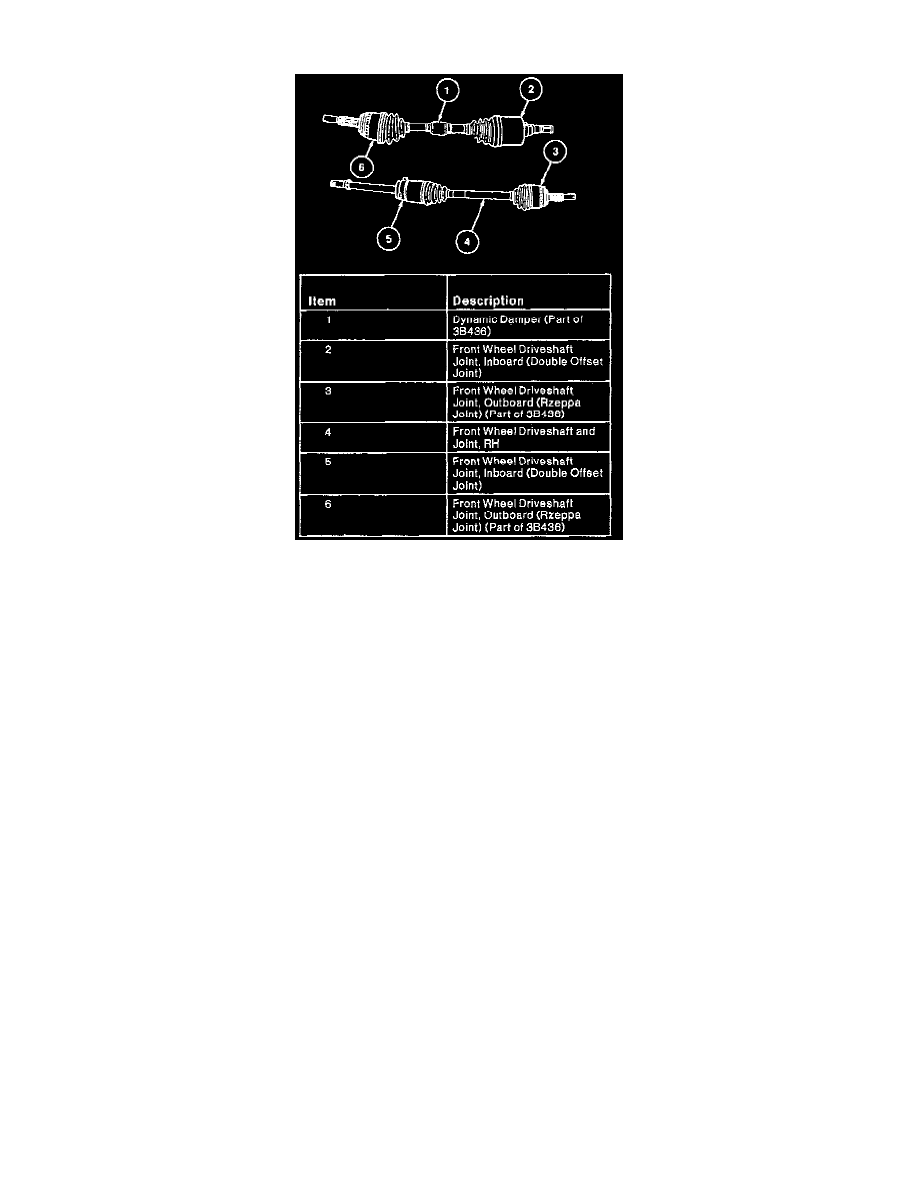Villager V6-181 3.0L SOHC VIN 1 EFI (1997)

Axle Shaft: Description and Operation
The front wheel driveshaft and joints are the mechanical links that transfer engine power from the transaxle and differential to the front wheels. At the
transaxle end, the front wheel driveshaft joints are splined to the differential side gears. Disengagement of the LH front wheel driveshaft joint from the
differential side gear is prevented by an expanding spring steel circlip. During installation, the circlip compresses around the shaft as it enters the gear.
Once through the differential side gear, the circlip expands into a counterbore machined into the back of the differential side gear. The RH front wheel
driveshaft and joint is secured by a front axle bearing.
The wheel ends of the front wheel driveshaft and joints are splined to the wheel hubs, which are supported on one-piece wheel bearings. Disengagement
of the front wheel driveshaft and joint from the wheel hub is prevented by an assembly consisting of the following:
-
Cotter pin
-
Front axle wheel hub retainer
-
Front wheel outer bearing retainer washer
Backlash between the wheel hub and front wheel driveshaft and joint is eliminated by the splines. The wheel hub splines are machined straight while the
front wheel driveshaft and joint splines are machined with a slight helical cut. The difference in splines provides a tight backlash-free coupling without
the removal and installation problems associated with an interference fit.
Front wheel driveshaft joints are installed at both ends of the front wheel driveshaft and joints. The outboard front wheel driveshaft joints are Rzeppa
joints. The inboard front wheel driveshaft joints are double offset joints. A front axle bearing assembly is installed in the middle of the RH front wheel
driveshaft and joint to further reduce vibration. A halfshaft is used on each side to reduce torque steer.
The front wheel driveshaft and joints are necessary to transmit engine power while compensating for front suspension movement. As the suspension
moves, the front wheel driveshaft joints allow the halfshaft to change length and to operate smoothly through varying angles.
